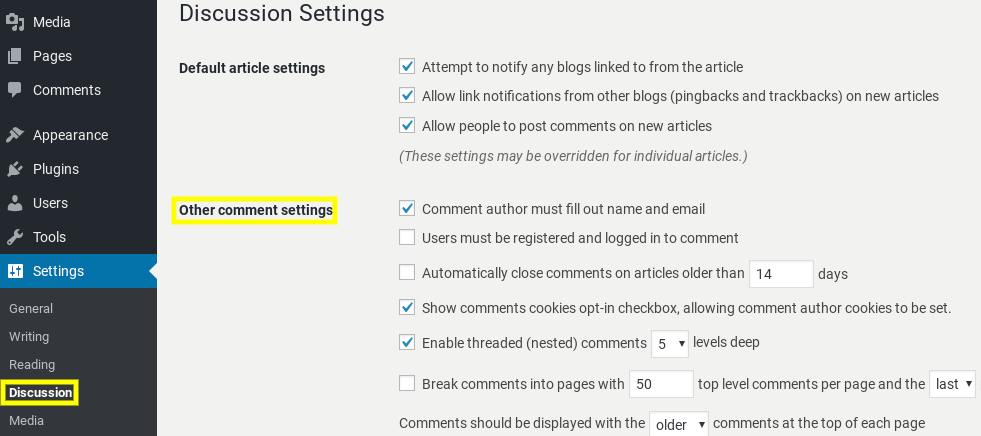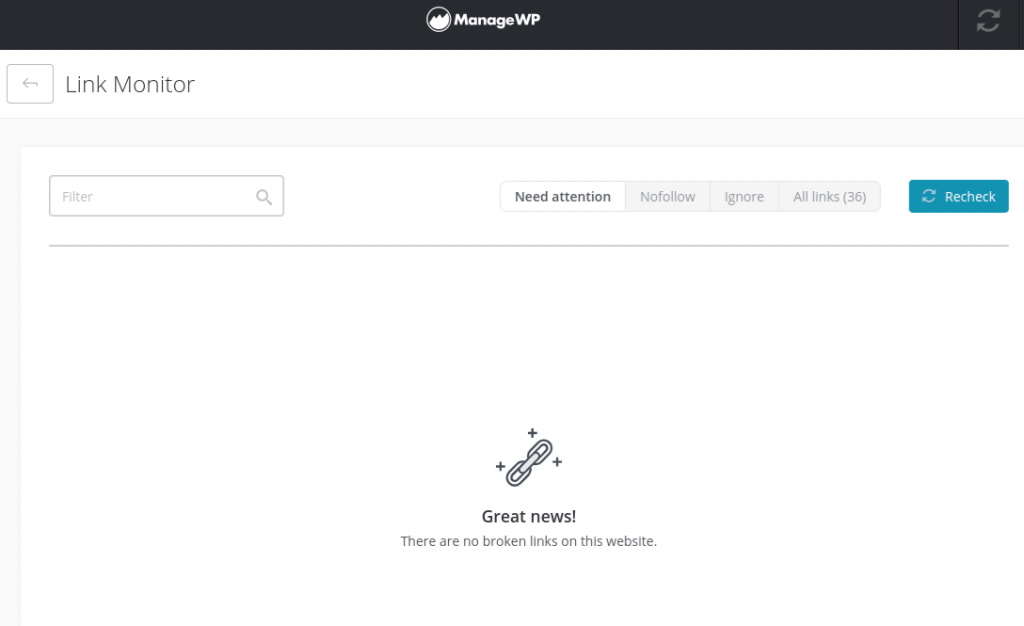Making sure your WordPress site ranks well on search engines is critical for any online marketing strategy. Many Search Engine Optimization (SEO) factors affect the positioning of your posts and pages in search results. Backlinks can be one of the most confusing but also one of the most crucial.
When used well, they can lend authority to your site and offer higher rankings in Search Engine Results Pages (SERPs). However, you could seriously damage your site’s reputation and visibility if you don’t have a solid backlink strategy.
This post will explain backlinks and why they’re important for SEO. Then, we’ll offer guidance on how to use them properly. Let’s get started!
An Introduction to Backlinks
Backlinks refer to any link that points towards your website. They’re also known as ‘inbound’ links or ‘incoming’ links. Typically, we refer to links outside your domain or ‘external’ when discussing backlinks. However, they can also be ‘internal’ – links from one page on your site to another.
Imagine you have a client that runs a fashion blog. If a popular fashion magazine links to one of its articles about the latest trends, that’s an example of a typical backlink. On the other hand, if they have a page about “Summer Fashion” on their blog and link it to another page on the blog about “Beachwear Essentials”, that’s also a form of a backlink.
External links are commonly used to redirect users to a trusted website that offers more information or authority on the subject of the post or page. It’s like references in an academic paper; they guide readers to additional sources of information or authority on the topic. If you’re writing an article about the benefits of yoga, for example, you could include an external backlink to a scientific study published by a reputable university that provides empirical evidence of yoga’s physical and mental health benefits. This not only enhances the credibility of your article but also adds value for your readers.
The primary goal of backlinks is to improve users’ experiences. However, backlinks from credible, relevant sites also tell Google your content is valuable, reliable, and worth ranking. They also play a role in how search engines discover your web pages.
These platforms accomplish this via dofollow links. All backlinks are dofollow links by default and indicate to search engine crawlers that they should follow them.
For example, if you run a blog and accept guest posts from other authors, you might use nofollow links for certain outbound links within those guest posts. This practice helps you control the flow of PageRank (a measure of website authority) and ensures that you’re not unintentionally endorsing content that doesn’t align with your site’s values.
However, site owners can also specify links as nofollow, preventing search engine bots from crawling them and making them irrelevant in terms of adding SEO value. That said, this is usually done for a good reason. You might use a nofollow link if you’re pointing to a questionable or unreliable source. For instance, you run a tech blog and find a tech-related forum post with some information relevant to your latest article. However, it is also known for hosting spammy or unreliable content. In this scenario, you could use a nofollow link when referencing the forum post to signal that you’re not vouching for the forum’s reliability. This can help prevent your site from losing trust and credibility with both users and search engines.
How Backlinks Impact SEO
According to a recent study, backlinks are the most important factor when it comes to SEO. Getting a backlink to your website is like receiving an endorsement. The more trusted sites that link to your page, the more search engines interpret it as a credible source worth ranking.
There are three main factors Google looks at when determining backlink quality:
Authority: Is the referring site credible and knowledgeable on the subject?
Backlinks from authoritative sites carry more weight. They’re like endorsements from experts in your field and can improve your reputation. Suppose you run a health and fitness blog, and a well-known medical institution, like the Mayo Clinic or Harvard Health, links to your article on nutrition. Google would view this backlink as highly authoritative because these institutions are trusted sources of medical information.
Relevance: Is the content being linked to relevant to the topic being discussed?
The context in which a backlink appears matters. Relevant backlinks show search engines that your content is part of a larger, meaningful conversation. In practice, the backlinks from websites related to your industry or niche carry more weight.
If your website focuses on technology reviews, a backlink from Wired to one of your product review articles is highly relevant. However, a backlink from a cooking blog to the same tech review article might not make sense in the context, and Google may not consider it as valuable.
Trustworthiness: Does the link or site seem spammy?
Backlinks from questionable sources can damage your website’s reputation. Avoid spammy or unreliable sources at all costs. Imagine a scenario where a gambling website links to your WordPress blog about your development and services. This type of backlink can raise concerns because it needs to align with your content’s trustworthiness and thematic focus. Google may view it as an attempt to manipulate search rankings and could penalize your site.
The location and number of links within the content also matter. Typically, you want your links to be higher up on the page. It’s also better to be one of a few high-quality backlinks than one of a dozen lower-quality ones.
Just as high-quality backlinks can improve your rankings, low-quality backlinks can hurt them. This is why link schemes, link spamming, and paying for backlinks are strongly discouraged. Posting links to your site in the comments of other people’s content can be considered spam, subsequently causing search engines to penalize you.
It’s wise to avoid linking to pages with low-domain authority and high spam scores, as well as sites that aren’t irrelevant to your niche. You don’t want to accept backlinks from these sources, either. We’ll discuss how to get rid of them shortly.
How to Use Backlinks to Drive Traffic to Your Site (3 Strategies)
Creating and maintaining a strong backlink profile is important to improve your posts’ SERP rankings. Here are three ways to do that.
1. Create Unique and Valuable Content
To help increase your chances of credible, trustworthy websites linking back to you, you’ll want to produce content worth sharing. However, determining what’s considered ‘link-worthy’ can be tricky.
Put simply, valuable content provides the reader with something they need, be it information, a product, or something else entirely. Often, content creators approach this obstacle by thinking of what problems or questions their readers have and working backwards to provide solutions.
Imagine you run a gardening blog. Instead of rehashing common gardening tips, you could create an in-depth guide on “Organic Pest Control for Home Gardens.”, for instance. This unique and valuable piece addresses a common problem for your readers, making it more likely to attract backlinks. Or, if you know your readers often struggle with identifying plant diseases, you could create a series of articles with detailed photos and descriptions, offering straightforward solutions to each illness.
Your content also needs to stand out from other sources. If you’re covering a popular subject, try putting a unique spin on it. One technique is to incorporate visually appealing elements, such as infographics or videos:

Using the same example, in your gardening blog, you could create an infographic showcasing the lifecycle of common garden pests and how to prevent each stage. This visual aid adds value and encourages others to share it.
When using links to other sites in your content, only link to trustworthy sources relevant to the topic you’re writing about. Including quality external links not only boosts the trustworthiness of your site but also increases your chances of receiving backlinks in return.
If you’re writing an article about the importance of regular car maintenance, include a link to a reputable automotive industry website that provides in-depth maintenance guides. This external link adds authority to your content.
You can also incorporate internal links to other posts you’ve written. However, you don’t want to overdo it and bombard your readers with links. Be they to other pages on your own site or to external sources, a large number of links increases the chances of readers leaving the page they’re on.
So, in the case of a car maintenance article, you can add an internal link to another relevant post you’ve written, such as “The Ultimate Guide to Engine Oil Types.” This internal link directs readers to more detailed information about engine oils, enhancing their understanding of the topic.
This way, you’re giving your visitors the most relevant and useful information while also getting on the search engine’s good side.
2. Engage with Industry Authorities and Partners
Participating in discussions within your niche can help position your site as a relevant and trustworthy source. One strategy is to engage in discussions in others’ comments sections, forums, and social media posts. You should make your presence and interest known to get attention within your niche. For instance, if a popular WordPress blog frequently covers topics related to your area of expertise, leave thoughtful comments on their articles. Share your insights, ask questions, and engage with other readers. Over time, your presence will be recognized, and you’ll build a reputation as an informed contributor. Just make sure not to overdo it, or you’ll end up looking pushy and spammy.
Another method is through guest blogging. Contributing a post on another website enables you to acquire a high-quality backlink from a source you have identified as relevant and trustworthy in your niche. Search for tech websites or blogs with a strong readership and accept guest contributions to reach out to them with a well-crafted guest post proposal. If accepted, you’ll contribute an article showcasing your expertise and receive a backlink to your own site within the guest post.
You can also use a tool such as BuzzSumo’s Content Analyzer to research sites that have published content on topics similar to yours:

If they have previously written about subjects you now cover, these other sites may be interested in sharing your content with their readers. You can search a topic and then export the results list to narrow down sites to send outreach emails to.
Remember that it’s important to focus on quality over quantity. You may be able to get a ton of backlinks from a variety of sites this way. However, they are only helpful if they come from reputable and relevant sources.
3. Track and Monitor Backlinks
There are several tools you can use to view your current backlinks. SEMRush, Moz, and Google Search Console are some popular options with this tracking feature. These tools can help you identify backlinks to your site from low-quality sources.
If you discover such links, the best thing you can do is reach out to the referring site and ask that the link be removed. If this isn’t possible, however, you can always ‘disavow’ the link. This grants nofollow status to the link so it won’t hurt your SEO.
Let’s say you maintain an e-commerce website selling sports equipment and discover through SEMrush that a low-quality blog with no relevance to sports or your products is linking to your website. This can be a red flag, so you may decide to take action to remove or disavow this link to protect your website’s health.
You’ll also want to be cognizant of the links that are on your own site. Spammers may leave comments on your website to generate backlinks to their own content. As we’ve mentioned, these spam links can hurt your SEO.
To avoid this, you can filter spam comments in your WordPress dashboard. Under Settings, click on Discussion:

You’ll have the option to disable comments entirely or to implement controls such as requiring users to register before commenting. Although these filters are helpful for preventing spam, they’re not always entirely effective.
To supplement the native WordPress settings, you might consider our Manage Comments feature. This tool makes it easy to view all your comments in one place and choose which to approve.
It’s also smart to monitor broken links to and from your site, as they result in poor user experience and can tank your site’s rankings. Having a tool to identify broken links enables you to resolve them as quickly as possible. Using the same example above, suppose you find a backlink from a dubious online directory to your sports equipment store. You can reach out to the directory’s webmaster and kindly ask them to remove the link. This can help protect your site from any potential negative impact.
Our Link Monitor feature automatically checks for unresponsive or broken links on your site. You’ll then be able to resolve the issue in a timely fashion by removing the link, adding a nofollow tag, or replacing it:

By consistently monitoring the links on your site, you can prevent spam and broken links from hurting your SEO.
Conclusion
The quality and relevance of inbound links are two of the most important factors that determine your ranking position in search engines. Ignoring your site’s backlinks could lead to a lack of traffic and conversions.
As we discussed in this post, there are a handful of methods you can use to acquire high-quality backlinks:
- Create unique and valuable content.
- Engage and partner with authoritative websites in your niche.
- Track and monitor the links on and to your site.
Do you have any questions about using backlinks? Let us know in the comments section below!
Image credit: Pexels.

Leave a Reply